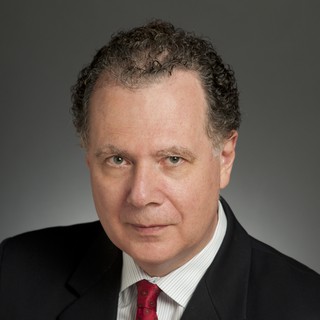Prof. Anna Geifman’s 2010 book Death Orders examines mass political terrorism in pre-revolutionary Russia as a precedent for today’s Islamist terrorism. Geifman’s study of the Russian communist terror that prepared the 1917 revolution has enormous value for students of contemporary Islamist organizations.
A common sociology links the Russian terrorists and the Islamists: Russia’s “urban populace swelled from around 9 million people in the mid-19th century to about 25 million in 1913, with inhabitants of most major Russian cities increasing four- or five-fold,” leading to a “breakdown of social values.” All of Europe experienced political upheaval associated with urbanization; but, “Less prepared for the advent of modernization, the Russians were vulnerable to an even greater degree,” according to Geifman, “increasingly prone to take an opportunity to release the bottled-up rage, especially when external circumstances stimulated the expression of distress.”
I interviewed Prof. Geifman for PJ Media this week by email. The transcript of our discussion follows.
PJM: In Death Orders, you document the worst epidemic of terrorism in modern history, namely the Red terror in the dozen years that preceded the Bolshevik revolution. Few people are aware of its scope: can you cite a few key facts to set this terror wave in context?
Geifman: Late imperial Russia was one of the birthplaces of modern terrorism, which is a new type of political violence. Subversives and insurrectionists had killed their adversaries as far back as 11th century , of course, but the terror campaign to which I am referring was essentially different from assassinations that had occurred elsewhere. A hallmark of this new kind of terror, which has escalated over the past 100 years, is that its objectives have shifted from the punishment of individual adversaries and the privileged, to indiscriminate cruelty carried out en masse. And it was Russia where we first saw terrorism that expressed modern and political fanaticism, with the intentional use of violence against civilian targets for the sake of ideological purposes.
Earlier, terrorism was directed against prominent political figures, as punishment for specific deeds or policy. With Russia, terror became systematic. Between 1905 and 1907, terrorists inflicted over 9,000 casualties among officials and bystanders. By 1907, there were regions where Communist terrorists killed an average of 18 people each day. Assassinations became so commonplace that newspapers stopped reporting them. Acts of terror became more common than traffic accidents. By the most conservative estimate, terrorists killed and wounded 16,800 Russian in the years 1905-1910. All in all, in the last 17 years of Russia’s imperial regime, about 17,000 were killed or maimed in 23,000 terrorist attacks.
PJM: We identify terror today with radical Islam, yet your study shows that the motivations for terror on a grand scale have a broader source than Islam. What is it that unites Red terrorists and Islamic jihadists?
Geifman: Terrorism is a variant of a phenomenon which psychiatrist and historian Robert Lifton called “totalism.” Its devotees — anarchists, Marxists, or Islamists — want to impose a new order based on an “all-or-nothing claim to truth.” They operate within distinctive parameters of a “theology of Armageddon — a final battle between good and evil” — in which the stakes are nothing less than universal salvation. As outlined in Eric Hoffer’s classic, The True Believer, such movements have mastered the art of “religiofication,” that is, converting political grievances into messianic aspirations and “practical purposes into holy causes.”
In the 20th century, this mode of structured violence has taken on a life of its own. It is no longer rooted in a a particular social context and accumulated destructive energy. It goes beyond particular social or economic problems, or adherence to a militant doctrine. Totalist ideology and its use of terror is a global phenomenon.
PJM: You have taken up an historical theme that many academics avoid. What motivated you to undertake this study?
Geifman: For me, an overwhelming experience and a turning point was the Islamist atrocity at Beslan, a tiny town in the Russian republic of North Osetia, in the northern Caucasus. On 1 September 2004, amid the annual back-to-school festivities across the former Soviet Union, 32 heavily-armed, masked hostage-takers held nearly 1,200 children, their relatives, and teachers inside a school. For three days horror-stricken parents waited and prayed in the schoolyard. Negotiations with terrorists reached a stalemate after they rejected requests for hostages to receive food and medications. Children fainted, had seizures, hallucinated. Finally, on September 3 several blasts shook the school. As the security forces were making their way inside the burning building, amid smoke, screams, and confusion, half-naked boys and girls jumped out of windows and ran for their lives — and the terrorists methodically shot them in the back from the rooftop. 334 people died including 156 children.
By then, I had studied terrorism as an academic subject for 20 years, but images of armed men shooting point-blank at small children stripped of their clothes stirred terrible memories. We had already seen all this in the Holocaust — the defenseless nakedness, the ash and blood-covered bodies, the strangely composed, otherworldly faces. The ruins of that school, where hundreds of prisoners suffered from unbearable heat and dozens perished in flames, were not just the site of another terrorist act; for me, they were a symbol of mass homicide. For me as a Jew, they were akin to the chimneys of Auschwitz.
I wrote this book as a scholar, with academic standards of evidence and argument. After Beslan, though, terrorism was no longer an issue that I could tackle as an intellectual enterprise. Mass murder of civilians, whether at the World Trade Center in 2001 or Beslan in 2004, has become the terrorists’ top priority. I saw this personally when I did research and taught in the Israeli town of Sderot. There, between 2001 and 2009, approximately 12,000 Qassam rockets produced by Hamas exploded in residential areas. You can’t work on this material as a scholar without sharing the pain of the victims.
PJM: After the so-called Arab Spring, there’s a tendency to play down the terrorist connections of organizations like the Muslim Brotherhood in Hamas, on the grounds that America has to deal with parties that win elections. What does your study of the Russian experience tell us about the evolution of terrorist organizations? Are they likely to become peaceable after they win elections?
Geifman: Russia was the first country ever to live under a totalist ideology upheld by men with extensive terrorist experience. Having taken over the administration, the Bolsheviks proceeded to implement government-sponsored machinery of state terror — relying on the pre-1917 terrorist mentality and practices.
Lenin and his associates perpetrated what they called the “Red Terror” — an instrument of repression in the hands of the revolutionary regime. Building on the notion of indiscriminate or “motiveless terror” of the early 1900s, the Bolsheviks launched their campaign of state-sponsored coercion against groups and individuals designated as “class enemies” of the proletarian dictatorship. Lenin repeatedly claimed that they “forced” terrorism upon the Bolsheviks, who had to kill “in self-defense.” In reality, he had planned mass repressions a decade before he had a chance to introduce them as a state policy. As early as 1908 he had envisaged “real, nation-wide terror, which reinvigorates the country.”
Seeking to become a single-party government, the Bolsheviks did away even with fellow-revolutionaries. We would see similar effort on the part of Hitler’s cohorts in their initial years in power. Presently, extremists contest political control in the not-yet-established Palestinian state and fight for its meager economic resources. For example, in July 2008, the Hamas eliminated Fatah supporters in Gaza — exactly the way in July 1918 in Moscow, Lenin had done away with the radical Left Socialists-Revolutionaries — the last obstacle to Bolshevik one-party rule. This example emphasizes the point: terrorists in power demonstrate determination to establish terror-based dictatorships.
Elections are hardly a guarantee against state terrorism. It does not matter that the Muslim Brotherhood was voted into government in Egypt via a democratic process. The chance that these jihadists will become more moderate is about the same as it was for the Nazis to seek peace after being elected to power.










Join the conversation as a VIP Member